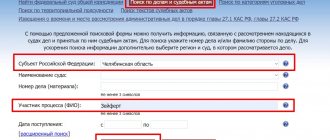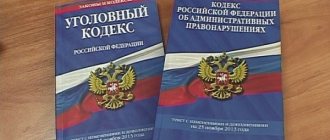Consolidation of criminal cases - this new law was signed by the President of the Russian Federation back in 2016.
In accordance with the changes, Russian courts now have the opportunity to combine several legal cases into one trial if one of the parties files a petition. This permission is accepted if there is a reason for association, even if a legal case is already being considered in court. Until now, the merger was carried out by the investigator and the inquiry officer at the preliminary stage of the proceedings.
Multi-channel free hotline Legal advice on criminal law. Every day from 9.00 to 21.00
Moscow and region: +7 (495) 662-44-36
St. Petersburg: +7 (812) 449-43-40
How it goes
The combination of criminal cases into one judicial proceeding occurs through the actions of the investigator and the interrogating officer.
- a number of citizens who committed a single, certain number of legal violations;
- an object that has committed many legal violations, thefts, murders;
- a person who is accused of deliberately concealing particularly serious illegal acts being investigated for this criminal violation.
Connection is allowed in the event of failure to identify the object, which automatically becomes the accused, and there is ample justification for the assumption that the law-violating actions committed by the object are a number of citizens.
The legislation gives the right to connect cases against unidentified persons if there is evidence of a crime committed by a citizen or group. This may be evidence - of a specific method, subject related to the offense committed.
There is no reason to combine legal cases if there is no totality of criminal results of careless actions of people who are not involved in one crime or attack on a specific object.
- Discontinued cases.
- Suspended cases.
Grouping is a general condition for preliminary investigations, which ensures its comprehensive, objective completeness.
After the latest update of the legislation comes into force, if suitable circumstances exist, the connection of criminal cases by the court occurs independently, without prosecutorial intervention.
Connection of criminal cases. Separation of criminal case materials into separate proceedings
Connection of criminal cases
According to the general rules of criminal proceedings, each identified crime necessitates the initiation and investigation, and then trial of a criminal case.
However, the criminal legislation of the Russian Federation provides for a fairly large list of forms of criminal behavior of a complex, multiple nature (complicity, aggregation of crimes, etc.). Such forms imply the presence of two or more acts of criminal behavior related to each other. Therefore, for a more successful investigation and subsequent trial of such cases, to reduce procedural time and costs, to optimize the work of the inquiry and preliminary investigation bodies, the legislator provides for the possibility of combining two or more related criminal cases into one proceeding.
So, in accordance with Part 1 of Art. 153 of the Code of Criminal Procedure in one proceeding, criminal cases may be combined in relation to :
- several persons who committed one or more crimes in complicity;
- one person who has committed several crimes;
- a person accused of not previously promised concealment of crimes being investigated in these criminal cases.
The connection of criminal cases is also allowed in cases where the person to be charged as an accused has not been identified, but there are sufficient grounds to believe that several crimes were committed by one person or group of persons.
Criminal cases are joined:
- those under investigation by the investigator - on the basis of a resolution of the head of the investigative body;
- being in the investigation of the investigator - on the basis of the prosecutor's decision.
- persons under investigation by various preliminary investigation bodies - by the head of the investigative body on the basis of the prosecutor’s decision to determine jurisdiction (if the preliminary investigation is carried out in the form of an inquiry, this decision is made by the prosecutor).
When combining criminal cases, the period for proceedings on them is determined by the criminal case that has the longest period of preliminary investigation. At the same time, the period of proceedings in other criminal cases is absorbed by the longest period and is not additionally taken into account.
Separation of criminal case materials into separate proceedings
The criminal procedural legislation provides for the possibility of separating one criminal case from another into separate proceedings to complete its investigation, as well as in cases where it is established that there is no connection between them.
So, according to Part 1 of Art. 154 of the Code of Criminal Procedure, another criminal case may be separated from a criminal case into separate proceedings in relation to:
- individual suspects or accused in criminal cases of crimes committed in complicity, in the cases specified in paragraphs 1-4 of the first part of Art. 208 of the Code (when there is no real possibility of participation of the suspect or accused in a criminal case);
- a minor suspect or accused prosecuted together with adult accused;
- other persons suspected or accused of committing a crime not related to the acts charged in the criminal case under investigation, when this becomes known during the preliminary investigation;
- a suspect or accused with whom the prosecutor has entered into a pre-trial cooperation agreement;
- individual suspects in respect of whom the preliminary investigation is carried out in the manner established by Chapter 32.1 (inquiry in an abbreviated form), if in relation to other suspects or accused the preliminary investigation is carried out in the general manner.
Separation of a criminal case into a separate proceeding to complete the preliminary investigation is permitted if this does not affect the comprehensiveness and objectivity of the preliminary investigation and resolution of the criminal case, in cases where this is caused by the large volume of the criminal case or the multiplicity of its episodes.
The separation of a criminal case is carried out on the basis of a decision of the investigator or inquiry officer. If a criminal case is separated into separate proceedings for the purpose of conducting a preliminary investigation of a new crime or against a new person, then the resolution must contain a decision to initiate a criminal case in the manner prescribed by Article 146 of the Code.
A criminal case separated into separate proceedings must contain originals or copies of procedural documents relevant to this criminal case certified by the investigator or inquiry officer.
Materials from a criminal case separated into separate proceedings are admitted as evidence in this criminal case.
The period of preliminary investigation in a criminal case separated into separate proceedings is calculated
- from the date of the relevant decision, when a criminal case is opened for a new crime or against a new person;
- from the moment of initiation of the criminal case from which it was separated into separate proceedings - in other cases.
At the same time, the legislator especially emphasizes that such separation of a criminal case to complete pre-trial proceedings is allowed only if this does not affect the comprehensiveness and objectivity of the investigation and resolution of a voluminous or multi-episode criminal case (Part 2 of Article 154 of the Code of Criminal Procedure).
0
3.5
Legal commentary
As amended by the commentary to Art. 153 of the Code of Criminal Procedure indicates the following theses:
- Combination is carried out if a person appears as an accused in one case, and as a victim in another.
- Consolidation of criminal cases under the Code of Criminal Procedure of the Russian Federation is an optional action. This is not news, but a established pattern; the totality of the circumstances of each individual case, the importance of objective, timely action in the investigation are taken into account. Preliminary inquiry and criminal proceedings determine the need for combination. This concentrates the power and methods of analyzing investigations to the investigative body as much as possible. The detailed aspects of the legal violations committed or one violation committed in connection are also fully determined. Research into existing evidence is carried out efficiently, which ultimately saves time, effort and money.
- To base the connection, accomplices, victims, witnesses, defendants, civil plaintiffs or other involved citizens are not taken into account when their actions are disparate and relate to different legal violating actions, there are no signs of their involvement.
- Grouping legal cases into a single one is possible by the leadership of the investigative body after it issues the appropriate form of the decision. When legal cases are under the jurisdiction of several investigative bodies, the prosecutor leading the combined cases decides on their merger. Initiation of the combination is possible by the body of inquiry and the head of the investigation, since he directs and controls the progress of the investigation.
- The prosecutor issues permission to consolidate legal cases pending with the investigator.
- For connected cases, the production deadlines change; the longest of the preliminary investigations is selected. The smallest ones are absorbed for the longest period of time, then those that do not appear anywhere. A separate procedural document in this regard is not required.
To connect cases, it is necessary to prove the involvement of persons in the offenses committed. Only after the accusation can a combination be made.
But the edition of the commentary to the code also states that there is a law of exclusion that allows their association in relation to a suspect or unidentified persons.
The basis for combining cases is the involvement of different people in one violation, the connection of various actions with the same people.
The Constitutional Court recognized the relationship between the issues of combining criminal cases and the period of detention
On January 14, the Constitutional Court issued Ruling No. 6-O in the case of verification of Art. 109 of the Code of Criminal Procedure of the Russian Federation, which regulates the terms of detention and the procedure for their extension by the court.
Reason for applying to the Constitutional Court
On March 6, 2021, Alexander Efimov was detained by law enforcement agencies on suspicion of committing fraud under Part 4 of Art. 159 of the Criminal Code of the Russian Federation. On March 9, the Vsevolozhsk City Court chose a preventive measure for him in the form of detention; subsequently, it was repeatedly extended for 12 months - until March 5, 2021. But on March 1, the St. Petersburg City Court refused to satisfy the investigator’s next request for an extension and ordered place Efimov under house arrest. The ruling was subsequently upheld on appeal. Both authorities considered that the investigation of the criminal case was actually completed and the accused, together with his defense attorneys, began to get acquainted with the materials of the case, therefore the circumstances taken into account when choosing and extending the previous preventive measure changed significantly and lost their relevance.
At the same time, the investigative department of the Ministry of Internal Affairs of Russia for the Vsevolozhsk region was processing another criminal case on the grounds of a crime under Part 4 of Art. 159 of the Criminal Code of the Russian Federation, which was initiated on February 27, 2021. Subsequently, the investigation into it was suspended due to the inability to identify the accused. However, on February 25, 2021, it was resumed, and on March 1, Alexander Efimov was detained on suspicion of committing this crime, and the very next day the court again ordered his detention.
The term of the new preventive measure was calculated independently (regardless of the time the citizen was held in custody in the first case) and was repeatedly extended by the court with reference to Efimov’s dual citizenship, several foreign passports, and his ability to influence witnesses to change their testimony.
The defense unsuccessfully tried to draw the attention of the appeal to the fact that when choosing a preventive measure in the form of detention in a new criminal case, the terms of the previous detention of a citizen in a pre-trial detention center in another criminal case should be taken into account.
Contents of the complaint to the Constitutional Court of the Russian Federation
On August 27, 2021, lawyer at Lapinsky and Partners Konstantin Kuzminykh, defending Alexander Efimov, sent a complaint to the Constitutional Court (available from AG), in which he indicated that Art. 109 “Terms of detention” of the Code of Criminal Procedure of the Russian Federation does not correspond to the Basic Law due to its uncertainty in terms of establishing the period of detention of an accused whose criminal prosecution is carried out in two or more criminal cases. According to the applicant, such a defect in the contested article entails a violation of its second part on the inadmissibility of exceeding the maximum (12 months) period of this preventive measure.
Investigative and judicial practices under Article 153 of the Code of Criminal Procedure of the Russian Federation
Merging examples:
- Lawyer D.S., head of A.K., an officially unregistered organization “Christian State”, announced the merger of his client’s two cases and their transfer to the Investigative Committee. The leader of this organization was arrested in September for putting pressure on public institutions for showing the film Matilda. He is accused of sending letters to cinemas demanding that they refuse to distribute the film. In October, a criminal case was opened on extremism against A.K. The cases were merged.
- The Presidium of the Stavropol Regional Court decided to merge two legal cases against the bandit group Sh.B., which committed bloody raids and terrorist attacks in Budennovsk, Pervomaisk, Beslan and other territories of the region since 1995, to consider them. They are charged with extremism, terrorism, and banditry.
- A legal case was sent to the court against the head of the bank M.U., its initiation began in February 2011. During the investigation, it was established that U. organized and led a criminal group, with the help of which he seized corporate control in many banking institutions in Moscow and regions of the Russian Federation, after which their assets were stolen; only an approximate amount was established, exceeding 15 billion rubles. In fact, investigators from all over the country have done a tremendous amount of work collecting criminal cases initiated on the facts of U. crimes for their connection on the basis of the Main Investigation Department at the Main Directorate of the Ministry of Internal Affairs of the city of Moscow. The measures taken in the investigative activities completely revealed the criminal acts of the accused of an economic crime. The work of the investigative body is to deeply study each case, prevent, prevent erroneous actions, so that the investigation does not deviate from the correct course.
Thanks to the consolidation of cases, the judicial authorities are able to fully and comprehensively consider violations and get to the bottom of the truth.
Characteristics of the connection mechanism
Combining criminal cases into one proceeding involves extracting certain parts of different cases and placing them into one main one. The Criminal Procedure Code allows for the consolidation of criminal cases both at the stage of pre-trial investigation and during trial. In the first case, combining several materials into one production is the norm, but in the second, it is rather an exception.
If a judge has a reason to combine several proceedings into one, it is sent to the prosecutor for further investigation; the judge himself does not have the right to combine the material of several investigations into one.
The procedure for combining criminal cases is strictly controlled by the head of the investigative body or the prosecutor, depending on the form of the preliminary investigation. The initiative to join proceedings may come from the investigator, but the prosecutor must make an appropriate decision outlining the specific reasons for this decision. The connection of criminal proceedings is regulated by Articles 150 and 151 of the Criminal Procedure Code. The duration of proceedings in a new case arising from several proceedings is determined by the period of the criminal proceedings for the investigation of which the longest period remains.
Not all cases can be combined with each other; for example, it is prohibited to combine cases if there are identical consequences, due to the negligence of the actions of subjects who were not accomplices. It is impossible to connect criminal cases that have been terminated or suspended without the prosecutor canceling the relevant decision and resuming it. If, during the investigation of a specific case, a new act is revealed, then initially new proceedings are resumed on it, and only then the materials are combined with each other. The same applies to the situation in which prosecution was initiated against one subject of an offense, but during the investigation process accomplices were identified, cases must also be opened against them, and only then, they should be connected with each other.
The procedure and timing for separating criminal case materials into separate proceedings under the Code of Criminal Procedure of the Russian Federation, Article 155
An investigation without initiating criminal proceedings is a significant violation of the law. Even if during the investigation the evidence of a particular subject’s guilt is fully collected, it will be found inconsistent with the law.
How does it help?
The merger occurs in one proceeding in which one person with the status of:
- person under investigation;
- the accused;
- the defendant.
For those who have committed several offenses, it helps the investigative and judicial authorities to fully assess the volume and characteristics of the criminal act and, as a rule, impose the proper punishment.
The representative conducting the preparatory investigation establishes:
- The psychological makeup of the personality of the suspect or accused.
- Criminal connection, patrons or people who are accomplices.
- A more suitable condition is created for exploring the offender's environment.
These circumstances help to effectively investigate offenses committed by a suspected citizen against whom charges have been brought.
If we specifically touch upon the procedure for merging legal cases, it should be noted that the Code of Criminal Procedure of the Russian Federation does not specify the procedural procedure for merging in sufficient detail.
The legislation does not specify the required procedure for this action, so procedural errors occur.








